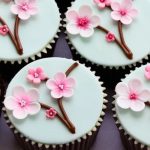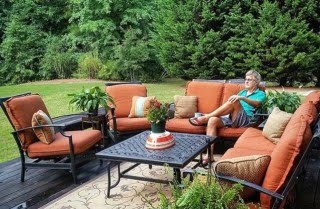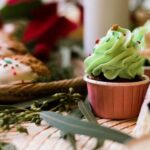Are you wondering how to do cake decoration at home? Whether you’re a beginner or a seasoned baker, mastering the art of cake decoration can take your baking skills to the next level. With the rise of home baking and the popularity of DIY cake decorating, there’s never been a better time to explore this creative and rewarding craft.
Cake decoration goes beyond just making a cake look pretty; it enhances the overall taste and presentation of a dessert. From simple frosting techniques to intricate fondant work, there are endless possibilities for creating stunning cakes right in your own kitchen.
In this article, we’ll delve into the world of cake decoration, covering everything from essential tools and materials to advanced techniques and troubleshooting common challenges. Whether you’re looking to decorate a birthday cake, wedding cake, or simply want to elevate your everyday bakes, we’ve got you covered with practical tips and inspiration for achieving professional-looking results at home. Let’s get started on your journey to becoming a master cake decorator.
Tools and Materials Needed for Cake Decoration at Home
Decorating a cake at home can be a fun and rewarding experience, but having the right tools and materials is essential to achieving professional-looking results. Whether you’re a beginner or an experienced baker, there are certain items that are indispensable for cake decoration.
List of Essential Tools
Some of the essential tools for cake decoration include piping bags, spatulas, and pastry tips. Piping bags allow you to create intricate designs with icing, while spatulas are essential for smoothing frosting onto the cake. Different shapes and sizes of pastry tips can be used to achieve various decorative effects.
Recommended Frosting and Coloring
When it comes to frosting, buttercream is a popular choice for its versatility and ease of use. Royal icing is another option that hardens after application, making it ideal for creating 3D decorations. As for food coloring, gel-based colors are recommended as they provide vibrant hues without altering the consistency of the frosting.
Edible Decorations
In addition to frosting and food coloring, edible decorations such as sprinkles, edible pearls, and fondant accents can add an extra touch of creativity to your cake. It’s important to ensure that any decorations used are safe for consumption and complement the overall design of the cake.
By having these essential tools and materials on hand, you’ll be well-equipped to embark on your cake decorating journey at home. With practice and experimentation, you’ll soon be creating beautiful cakes that impress friends and family alike.
Choosing the Right Cake for Decoration
When it comes to cake decoration, choosing the right cake base is essential to ensure that your design turns out as intended. The first consideration when selecting a cake for decoration is its flavor and texture.
Different cakes will yield different results based on their density, moisture, and crumb structure. For example, a light and fluffy sponge cake might be better suited for intricate designs with fondant, while a more robust pound cake could hold up well under layers of buttercream and fillings.
Another factor to consider when choosing a cake for decoration is the size and shape. The dimensions of your cake will impact the overall aesthetics of your creation, so it’s important to choose a size that complements your design.
Additionally, the shape of the cake can also play a role in determining how suitable it is for specific decorations – for instance, round cakes are versatile for most designs, but square or rectangular cakes may work better for certain themed or sculpted creations.
In addition to flavor and shape considerations, it’s important to consider the freshness and sturdiness of the cake. Freshly baked cakes are easier to work with since they are less likely to crumble or break during icing and decorating. It’s also crucial to ensure that the texture of the cake is consistent throughout, as air pockets or uneven surfaces can make frosting and decorating more challenging.
| Considerations When Choosing a Cake | Factors to Consider |
|---|---|
| Flavor and Texture | Different textures are suited for different decorations |
| Size and Shape | The dimensions impact the overall aesthetics |
| Freshness and Sturdiness | Freshness makes cakes easier to work with; even texture is crucial |
Basic Cake Decorating Techniques
When it comes to cake decorating, mastering the basics is essential before moving on to more advanced techniques. In this section, we will provide step-by-step instructions for frosting a cake smoothly and introduce you to piping, enabling you to create different designs with icing.
Step-by-Step Frosting
Before beginning the frosting process, ensure that your cake is completely cooled to avoid any melting or sliding. Start by placing a dollop of frosting in the center of your serving plate or turntable and place the first layer of cake on top.
Apply a generous amount of frosting on top of the layer and use a spatula to spread it evenly, ensuring that it reaches the edges. Repeat this process for each layer and finish with a thin layer of frosting around the entire cake as your base coat.
Piping and Basic Design
Piping is an essential skill in cake decoration and allows for intricate designs to be created with ease. To begin, fit your piping bag with the desired tip – a star tip for simple borders or lettering, or a larger round tip for covering larger areas.
Fill the bag with your chosen icing color and twist the end tightly to prevent any leakage. Practice on a piece of parchment paper first to get familiar with consistent pressure and motion, then start piping your design onto your frosted cake.
Adding Details
After covering your cake with a base coat of icing and practicing basic piping techniques, experiment with adding details such as dots, swirls, or simple floral patterns. Use different tips and colors for variety, guiding yourself through designs using reference images if necessary. Make sure to clean off any smudges or mistakes quickly by smoothing them over before they set.
With these basic cake decorating techniques mastered, you’ll be ready to move onto more complex designs and styles in no time.
Advanced Cake Decorating Techniques
Decorating cakes can be taken to a whole new level with advanced techniques like working with fondant, marzipan, and gum paste. Fondant work is an art form that allows for intricate designs and creations on cakes. Rolling out the fondant smoothly and covering a cake without any wrinkles or air bubbles can be challenging, but practice makes perfect. Additionally, shaping the fondant into various figurines, flowers, or other decorations requires skill and creativity.
When it comes to marzipan and gum paste, these materials also open up endless possibilities for cake decoration. Marzipan is pliable and easy to work with, making it ideal for creating edible garnishes and figures. On the other hand, gum paste is excellent for crafting delicate flowers and intricate details that will set your cake apart.
Working with these advanced cake decorating techniques requires patience, precision, and practice. It is essential to have the right tools handy such as rolling pins, sculpting tools, and molds. Furthermore, experimenting with different colors and textures will help elevate your cake decorating game.
As you hone your skills in these advanced techniques for cake decoration at home, you’ll find that they offer boundless opportunities for expressing your artistry and creativity. Embracing the challenge of mastering these skills will undoubtedly lead to awe-inspiring creations that will impress family and friends alike.
| Advanced Cake Decorating Techniques | Data |
|---|---|
| Fondant Work | Detailed guide to rolling out fondant smoothly, covering cakes without wrinkles or air bubbles |
| Marzipan & Gum Paste | Crafting; garnishes; figures; flowers; intricate details; differences between them. |
| Patience & Precision | Incorporating these elements while using advanced techniques. |
Tips for Achieving Professional-Looking Cake Decorations at Home
Decorating a cake at home can be a fun and rewarding experience, but achieving professional-looking results may seem daunting for beginners. With the right techniques and tips, anyone can create stunning cake decorations right in their own kitchen. Here are some valuable tips to help you elevate your cake decorating skills:
- Invest in quality tools: A smooth, evenly decorated cake often starts with the right tools. Essential items like an offset spatula, piping bags, and a turntable can make a world of difference in achieving professional-looking results.
- Use proper frosting techniques: To achieve smooth and even icing on your cake, it’s important to apply a crumb coat first, refrigerate the cake, and then add a final layer of frosting. This will help create sharp edges and clean designs.
- Focus on precision: Pay attention to small details and take your time when piping or adding intricate designs. Using the right tips for your piping bag can help you create professional-looking borders, flowers, and other decorative elements.
Additionally, there are some simple tricks that can help improve the overall presentation of your cake decorations:
- Chill the cake: Before adding fondant or intricate decorations, chilling the cake can make it easier to work with. This helps prevent smudging or misshaping the frosting or icing.
- Fix mistakes strategically: If you make a mistake while decorating your cake, don’t panic. Use a small offset spatula or a toothpick to carefully fix any errors without compromising the entire design.
- Add finishing touches: Dusting your decorated cake with edible glitter, sprinkles, or other embellishments can give it an extra touch of elegance and professionalism.
By following these tips and incorporating them into your cake decorating routine, you’ll be well on your way to creating impressive designs that look as though they were made by a professional baker. Remember that practice makes perfect, so keep experimenting with different techniques and styles to enhance your skills even further.
DIY Cake Decoration Ideas and Inspiration
Decorating cakes at home allows for endless creativity and personalization. Whether it’s for a birthday, anniversary, or other special occasion, adding a unique touch to your cake can make the celebration even more memorable. Here are some DIY cake decoration ideas and inspirations to help you get started:
- Floral designs: Using buttercream or fondant, create beautiful flower decorations to adorn your cake. Whether it’s a simple bouquet or intricate floral patterns, flowers add a touch of elegance to any cake.
- Themed cakes: Take inspiration from your favorite movies, books, or hobbies to design a themed cake. From characters and scenes to symbols and motifs, themed cakes can be a fun and creative way to express your personality.
- Seasonal designs: Embrace the spirit of the season with seasonal cake decorations. For example, in the fall, you might incorporate rich autumn colors like red, orange, and brown into your designs. In the winter, opt for snowflakes or festive holiday themes.
Personalizing cakes for special occasions requires not only skill but also creativity. The possibilities are truly endless when it comes to decorating cakes at home.
Whether you’re looking for inspiration online or experimenting with your own ideas, remember that enjoying the process is just as important as achieving the final look. Let these DIY cake decoration ideas inspire you to unleash your creativity and personalize cakes for all of life’s meaningful moments.
Troubleshooting Common Cake Decorating Challenges
Cake decorating can be a fun and rewarding activity, but it’s not without its challenges. Common issues such as bulging fondant, cracked icing, or uneven decorations can often arise during the decorating process. However, with the right knowledge and techniques, these challenges can be easily overcome.
One common problem that home bakers encounter when working with fondant is bulging. This often occurs when the fondant traps air between itself and the cake, resulting in unsightly bulges along the edges. To avoid this issue, it’s important to properly smooth the fondant over the cake and gently press out any trapped air. Additionally, using a sharp knife to trim off excess fondant around the base of the cake can help prevent bulging.
Cracked icing is another challenge that many decorators face. This is often caused by overly dry or stiff frosting, which can crack under pressure or when cut into. To avoid this problem, it’s essential to use the right consistency of frosting for your particular design. Adding small amounts of liquid or using a different type of frosting altogether can help prevent cracking and create a smoother finish.
Finally, achieving even and symmetrical decorations can be difficult for beginners. Whether you’re piping icing onto your cake or placing edible decorations, achieving uniformity can be a challenge. One tip for ensuring even decorations is to mark guidelines on your cake with toothpicks before adding your designs. This will help you create an even placement pattern and ensure that your decorations are evenly spaced around the cake.
By being aware of these common challenges in cake decoration and knowing how to troubleshoot them effectively, home bakers can feel more confident in their abilities and achieve professional-looking results at home.
Conclusion
Decorating cakes at home is not just about making a delicious dessert, it’s also about expressing your creativity and personal style. Whether you’re a beginner or an experienced baker, the art of cake decoration allows you to showcase your imagination and skill. By embracing your creativity, you can turn a simple cake into a stunning centerpiece for any occasion.
One of the most rewarding aspects of cake decoration is the freedom to experiment with different designs, colors, and techniques. It’s an opportunity to explore your artistic side and create something truly unique. Whether you prefer classic styles or more elaborate decorations, there are endless possibilities to express yourself through cake decorating.
As you continue your journey in cake decoration, don’t be afraid to push the boundaries and try new ideas. Embracing your creativity means being open to learning from both successes and failures. Every cake you decorate is an opportunity to grow as a decorator and unleash your imagination. So go ahead, embrace your creativity and have fun turning simple cakes into works of art.
Bonus Section
In conclusion, learning how to decorate a cake at home can be an incredibly rewarding experience. With the rise of home baking and DIY cake decorating, more people are discovering the joy of creating beautiful and delicious treats for their loved ones. By embracing your creativity and honing your skills in cake decoration, you can impress your friends and family with professional-looking designs that are personalized to suit any occasion.
As you continue on your journey of cake decoration at home, it’s important to have the right tools and materials at your disposal. From piping bags and spatulas to different types of frosting and edible decorations, having a well-stocked kitchen will allow you to bring all your creative ideas to life. Additionally, exploring different cake bases, flavors, and textures will provide you with endless possibilities for experimenting with various decorating techniques.
Remember that practice makes perfect when it comes to cake decoration. As you continue to refine your skills, don’t be afraid to seek inspiration from various sources such as online tutorials, recommended products, or even joining a cake decorating community for support.
The key is to unleash your creativity and let your imagination run wild as you create stunning cakes that not only look amazing but also taste delicious. So go ahead, get started on your cake decorating journey today – the possibilities are truly endless.
Frequently Asked Questions
How Can I Decorate a Cake at Home?
Decorating a cake at home can be a fun and creative experience. You can start by choosing a theme or color scheme for your cake, then gather the necessary tools such as piping bags, icing tips, and offset spatulas.
Using various techniques like buttercream piping, fondant work, or even simple fruit and flower decorations can help elevate the look of your cake. Don’t be afraid to experiment and let your creativity shine through.
How Can I Practice Cake Decorating at Home?
Practicing cake decorating at home is essential for honing your skills. Consider starting with simple techniques like smoothing frosting or creating basic borders before moving on to more intricate designs.
You can also try experimenting with different icing consistencies, colors, and textures to expand your repertoire. Watching tutorials online or taking an online course can also provide valuable guidance and inspiration for improving your cake decorating abilities.
What Tips to Use for Cake Decorating?
When it comes to cake decorating, there are several tips that can make the process smoother and more successful. One important tip is to ensure that your cake is completely cooled before you begin decorating to prevent any melting or smudging of the icing. Additionally, using a turntable can help you evenly frost the cake and create smooth finishes.
Another helpful tip is to use a crumb coat before applying the final layer of frosting to trap any loose crumbs and create a cleaner look. Finally, practicing good piping techniques such as consistent pressure and steady hand movements can greatly improve the overall appearance of your cake decorations.

Welcome to my blog about home and family. This blog is a place where I will share my thoughts, ideas, and experiences related to these important topics. I am a stay-at-home mom with two young children. I hope you enjoy reading it! and may find some helpful tips and ideas that will make your home and family life even better!





